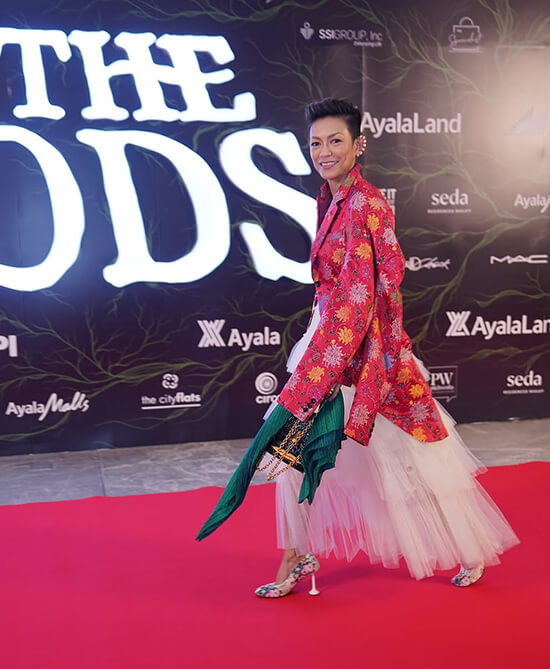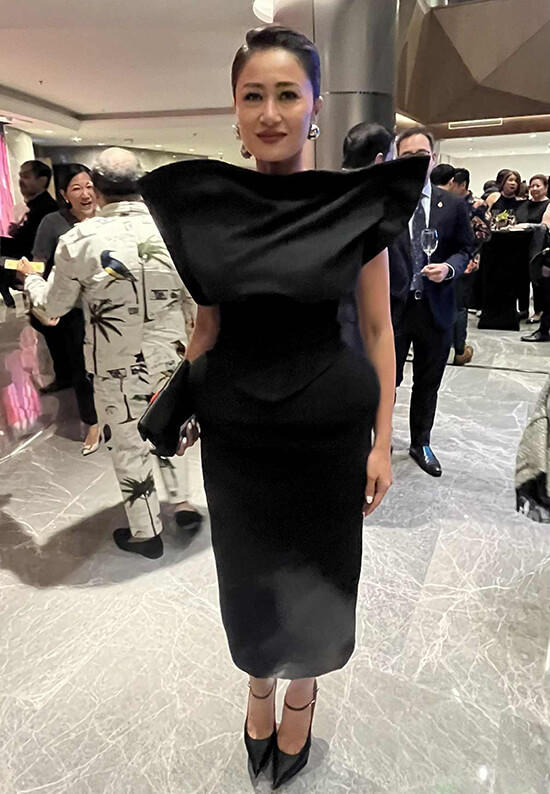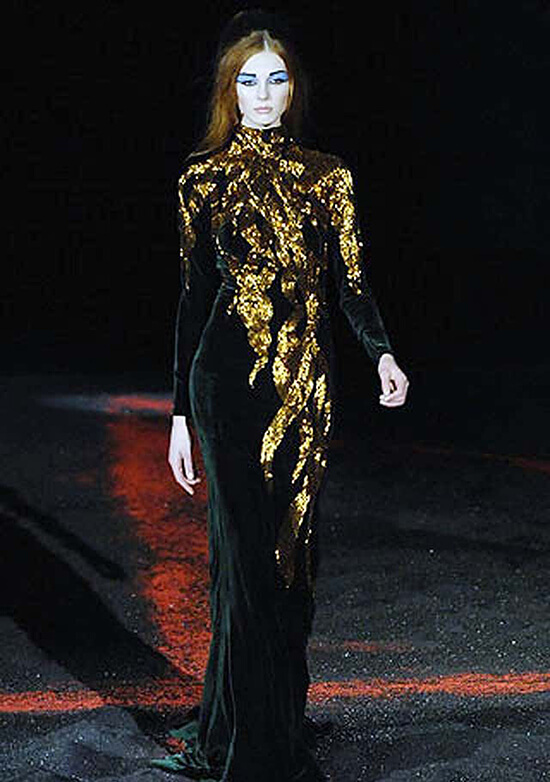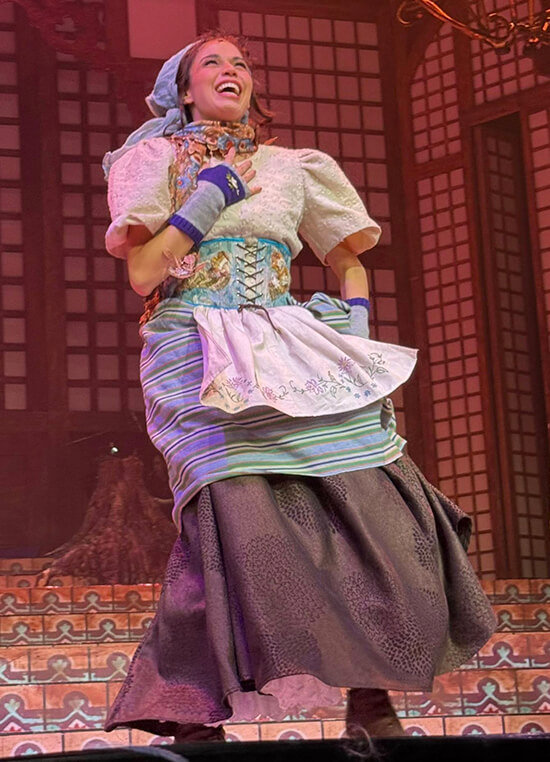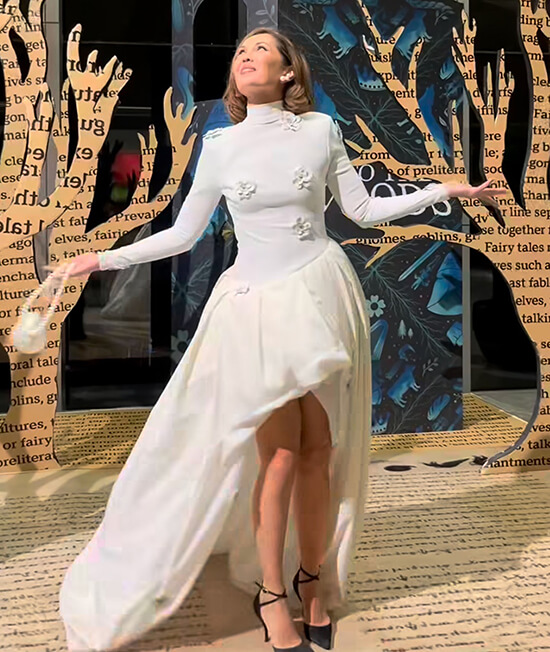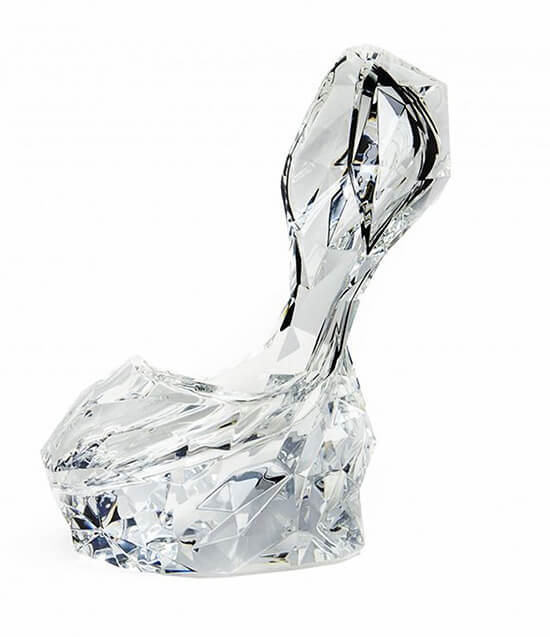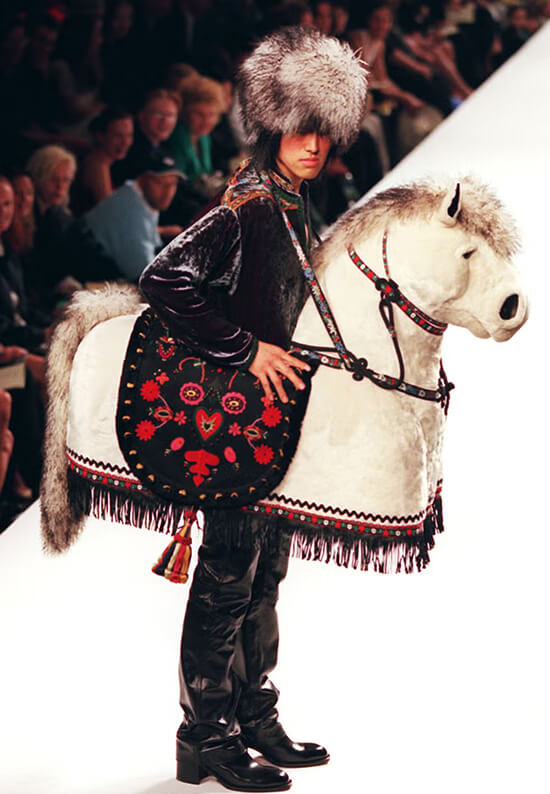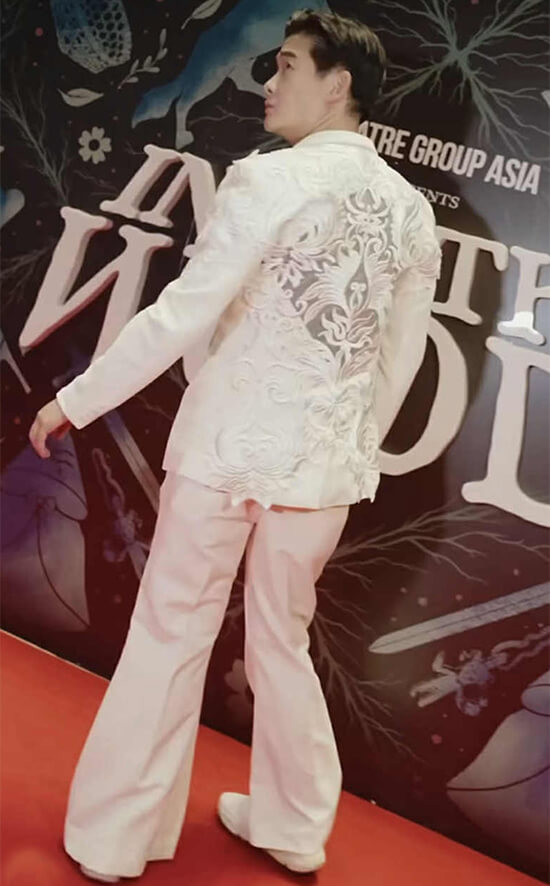When fashion ventures into the woods
It’s the hottest ticket in town and the gala invitation “by royal behest to attend a most gracious occasion,” with a dress code of “festival finery and fairy tale formal,” upped the ante even further for the opening of Into the Woods—the sold-out musical presented by Theatre Group Asia at Samsung Performing Arts Theater.
“What to wear?” suddenly became the concern of the moment after weeks of anticipating “How will they tweak this beloved musical?” But fashion has always been intertwined with theater and, in this case, with fairy tales which designers mine to create fantastical clothing as an antidote to technology, functionalism and globalization. And if the production team wanted guests to already be in the “zone” just as everyone on the stage was, the whole experience could only be more profound as they escaped into the woods, a world of mystery and magic that the Brothers Grimm created in their tales, and one which Stephen Sondheim, James Lapine and the creative team behind the production had subverted with their own twists.
Dress is crucial in fairy tales, signaling status, wealth, power, morality and transformation; even more so in this dark comedy of complex characters in the most challenging situations. Costume designer Raven Ong, an awardee in the recent Philstage Gawad Buhay Awards and whose work has graced the stages of New York and Manila, built a world using a Filipino lens with clothes used as a powerful tool to define characters and tell a most engaging story.
The Witch and Rapunzel

Clothing charts a character’s journey and development. The Witch was turned into a crone, a curse triggered when the Baker’s father stole magic beans from her garden. Raven Ong created a grunge ensemble for Lea Salonga’s old witch with embroidered Philippine foliage hangings that turned glam in a ruffled sea green gown designed by Rajo Laurel with translucent extensions pleated like anahaw leaves when she morphed back into her youthful self. Alexander McQueen’s FW 2007 collection had witches on his board, underscoring the power associated with hair in folklore and mythology, in a gown beaded with a cascade of golden tresses—calling to mind the long hair of Rapunzel (Joreen Bautista), the daughter of the witch.

At the gala, Vogue editors Pam Quiñones and Joyce Oreña came as stylish witches: Pam in a sculptural sabrina neckline by Vestido matched with a padded skirt reworked from a corset by Cheetah Rivera. Joyce did an East meets West fantasy, matching a Chinese brocade top with a ruffled tulle skirt.
Cinderella

In Cinderella’s (Arielle Jacob’s) case, for her transition from servant to princess, Ong tapped Filipino traditions and craft by first dressing her in a balintawak, the country version of the terno, with tapis and alampay, executed in the kantarines weave from Ilocos. As a princess, she dons a hoop-skirted terno with feather-embellished butterfly sleeves. At the reception, there were chic interpretations of these looks: Monique Villonco in a plaid tafetta skirt and black top accented by a piña alampay and Teresa Herrera in a white balloon mini skirt with a voluminous train.
Little Red Riding Hood


Little Red Riding Hood (Teetin Villanueva) starts off as young and naïve, in a red cape representing innocence and danger, interpreted by Ong with Cordillera weaves embroidered with baybayin letters and a dress with strawberries, a nod to Baguio City. After surviving the woods, she transforms by donning a wolf cape made from the hide of the very creature that threatened her, matched by a balisong pocket knife that she wields expertly.
The Prince

Ong dressed the princes (Josh Dela Cruz and Mark Bautista) in royal military gear using vibrant inaul handwoven fabrics with geometric patterns, from the Maguindanaoans of Mindanao—a deliberate choice since these people are known for their sultanate and rich artistic traditions like metalwork that includes the wavy-bladed keris ceremonial sword. Tim Yap had his own take on the prince in a white suite embroidered with the most joyous swirls.
The woods and the birds

The woods represent the unconscious, the past and the dark places where characters face their trials. The birds, as inhabitants of this space, signify an interconnectedness with nature and its rhythms that provide guidance to Cinderella in her moral dilemmas and difficult choices. Tessa Prieto had a sunnier take on the woods with her signature vibrant colors and headdress of leaves and flowers. CCP’s Carissa Coscolluela, on the other hand, interpreted it with heirloom bird brooches from her grandmother.


